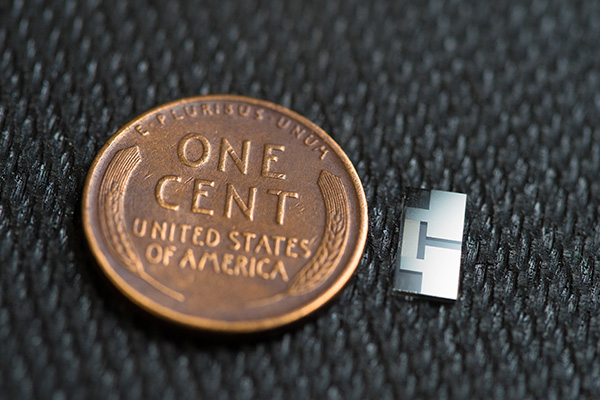(Ultrasound device improves charge time and run time in lithium batteries)
2020/2/18 カリフォルニア大学サンディエゴ校(UCSD)

・ UCSD が、リチウム金属電池(LMB)中のデンドライト(リチウム金属の析出)の形成を回避させる、超音波発振デバイスを開発。
・ 電池の一部として機能する同デバイスは、超音波で電解液を循環させてデンドライトの形成を回避する。充電時に形成されるデンドライトは電池性能を低下させ、短絡の原因となる。同デバイスは、異なる化学物質を使用する LMB 以外の電池にも対応可能。
・ 同デバイスは、スマートフォンを構成する市販の部品で作製でき、1 億~1 千億 Hz の領域の超高周波の音波を生成する。このようなデバイスは、スマートフォンではワイヤレス信号のフィルタ処理や、音声通話・データの特定とフィルタ処理に使用されている。
・ LMB は電池寿命が短いため、EV やエレクトロニクスの電源としての利用には不十分であるが、現在最高レベルのリチウムイオン電池の 2 倍の容量を有する。同超音波発振デバイスを統合した LMBでは 250 回の、リチウムイオン電池では 2000 回の充放電サイクルを確認。また、両電池とも各サイクルで 0%から 100%の充電を 10 分で完了した。
・ 電池分野の研究では、長寿命・高速充電を実現する最適な電池化学の発見に多く集中しているが、同大学では従来的な金属電池の電解液が静的であるという基本的な課題に着目。
・ このことにより、充電時に電解液のリチウムイオンが激減し、負極へのリチウムの不均一な積層が起こり易くなる。その結果、負極から正極にかけて樹状構造のデンドライトが形成される。高速充電ではこの現象がより急速に起こる。
・ 同デバイスは、電池内で超音波を拡散し、電解液を循環させてリチウムを補充。充電時、リチウムが負極に均一・高密度に積層し易くする。
・ 次の研究段階では、同技術を商用のリチウムイオン電池に統合する予定。同技術は、Matter
Labs(カリフォルニア州ヴェントゥーラを拠点とする技術開発企業)により UC San Diego からライセンス供与(非独占)されている。
・ 本研究には、米国エネルギー省(DOE)および UC San Diego の Accelerating Innovation to Market team が資金を提供した。
URL: https://ucsdnews.ucsd.edu/pressrelease/ultrasound-device-improves-charge-time-andrun-time-in-lithium-batteries
(関連情報)
Advanced Materials 掲載論文(アブストラクトのみ:全文は有料)
Enabling Rapid Charging Lithium Metal Batteries via Surface Acoustic Wave‐Driven Electrolyte Flow
URL: https://onlinelibrary.wiley.com/doi/abs/10.1002/adma.201907516
<NEDO海外技術情報より>
Abstract
Both powerful and unstable, practical lithium metal batteries have remained a difficult challenge for over 50 years. With severe ion depletion gradients in the electrolyte during charging, they rapidly develop porosity, dendrites, and dead Li that cause poor performance and, all too often, spectacular failure. Remarkably, incorporating a small, 100 MHz surface acoustic wave device (SAW) solves this problem. Providing acoustic streaming electrolyte flow during charging, the device enables dense Li plating and avoids porosity and dendrites. SAW‐integrated Li cells can operate up to 6 mA cm−2 in a commercial carbonate‐based electrolyte; omitting the SAW leads to short circuiting at 2 mA cm−2. The Li deposition is morphologically dendrite‐free and close to theoretical density when cycling with the SAW. With a 245 µm thick Li anode in a full Li||LFP (LiFePO4) cell, introducing the SAW increases the uncycled Li from 145 to 225 µm, decreasing Li consumption from 41% to only 8%. A closed‐form model is provided to explain the phenomena and serve as a design tool for integrating this chemistry‐agnostic approach into batteries whatever the chemistry within.



